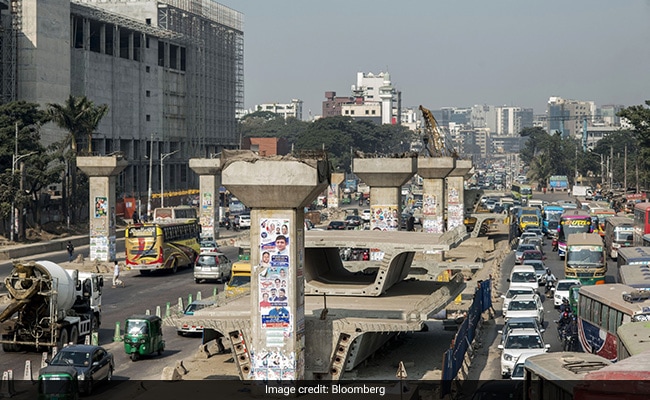
Bangladesh’s capital will soon get its first metro train, part of a Japanese-funded initiative to make traveling easier in one of the world’s busiest cities.
Prime Minister Sheikh Hasina will officially open a portion of the 20-kilometer (12.427-mile) urban rail project known as Line 6 on Wednesday. For the time being, the line links Dhaka’s northern area to a center of government buildings and hospitals. It will eventually pass through the city on its way to Motijheel’s financial sector in the south.
The project will probably significantly alter how people move in Dhaka, but its debut will also provide Hasina’s administration with some much-needed political capital. The leader and her party are under pressure as the country in South Asia confronts inflation and an energy crisis, its foreign currency reserves are depleting, and elections are anticipated in January 2024.
The average driving speed in Dhaka, which has a population of 10.3 million people crammed into 305 square kilometers (117.76 square miles), is currently less than 7 kilometers (4.3496 miles) per hour, down from 21 kilometers per hour ten years ago. According to World Bank research, given the present trends, it might fall as low as 4 kilometers per hour, which is slower than walking.
“It’s an extremely important development for a city like Dhaka,” Martin Rama, a consultant with the World Bank’s presidency and former regional chief economist for South Asia, said in an interview. “If you look at the case of India in many cities, it has changed a lot of the way people go to work. It’s a safe means of transportation, for instance, for women, which in South Asia is not trivial.”
At the same time, Rama said it would be “naive to think that congestion problems will go away” immediately because 90–95% of the additional road space created when a nation expands its public transportation system’s capacity gets taken up by increased traffic.
Every day, Bangladesh’s economy loses 3.2 million working hours to traffic congestion, costing the country’s economy billions of dollars annually. According to the Economist Intelligence Unit’s Global Livability Index for 2022, out of 172 cities throughout the world, Dhaka is the ninth least liveable.
“The bigger your city is, the more time you spend typically commuting,” said Rama. “So it’s a congestion cost that detracts from what the city has to offer.”
When Japan contributed 165.95 billion taka to the Line 6 project in 2012, Bangladesh authorized 219.85 billion taka ($2.1 billion) in funding. Later, as a new stretch connecting the metro train to Kamalapur, the country’s main railway station connecting Dhaka and the rest of the country, the price increased to 334.72 billion taka.
Two further urban railway lines in Dhaka are also funded by Japan. According to the website of the Japan International Cooperation Agency, three metro lines would be able to accommodate two million people per day once they are all finished.
After six months, Hasina opened the nation’s longest river bridge, extending more than six kilometers over the Padma River. That will link the southwest to the northeast, bringing together 80 million people, or half the nation.
